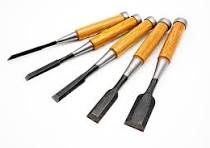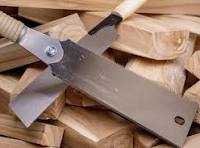iNTRODUCTION
The Japanese Tool Tradition: Japanese saws and chisels are renowned for their precision and sharpness, which have been refined over centuries of use. The intricate designs and flawless execution of these tools are a testament to the masterful craftsmanship that has been passed down through generations of Japanese artisans. The techniques used to forge these tools bear a strong resemblance to those employed in the creation of Samurai swords, highlighting a long-standing tradition of excellence and a deep respect for the country’s cultural heritage.

SIMILARITIES
One of the most striking similarities between the two types of tools is in the heat treatment process, which is crucial for achieving the desired hardness and toughness. Both swords and saws undergo a similar process of heat treatment to achieve the required properties. This involves heating the metal to a specific temperature, then quickly cooling it to induce a hard outer layer and a softer, more ductile core. This technique, known as “tempering,” allows the tools to maintain their sharpness while also being resistant to breakage.

PRODUCTION STAGES
The forging and hammering stages of production are also remarkably similar between the two types of tools. The hot metal is shaped and refined through repeated hammering and bending. This is similar to the process used to create the long, thin blade of a Samurai sword. The art of forging requires a high degree of skill and precision, as any imperfections in the metal can significantly impact the tool’s performance.
COMMITMENT TO EXCELLENCE
The final stages of both sword and saw making involve grinding and polishing the edges to achieve a razor-sharp finish. This meticulous process ensures that the tools are ready for use and can perform their intended functions with the utmost efficiency. The fine edges of Japanese saws and swords are a testament to the craftsmen’s dedication to excellence and their commitment to providing users with the best possible tools.
THE SAMURAI
The strong connection between Samurai sword making and the production of Japanese saws and chisels is evident in many ways. Master swordsmiths, known as “katana-shi,” have been passing down their skills and knowledge for generations. Many of the tools and methods used in modern saw and chisel production can be traced back to those employed in ancient sword making. This continuity of tradition ensures that the high standards of Japanese craftsmanship are maintained and that the country’s cultural heritage is preserved.

For example, the “tachisaki” or “poll” of a saw, which is the thicker end used for hammering, bears a striking resemblance to the “tsuka” or handle of a sword. The process of attaching the blade to the handle, known as “nakago-zukuri,” is also similar to the way the blade is attached to the hilt of a sword. These similarities illustrate the close relationship between the two types of tools and the shared techniques used in their creation.
CONCLUSION
Moreover, the emphasis on precision and craftsmanship in both sword and tool making reflects a deep respect for tradition and a commitment to excellence that has been a defining characteristic of Japanese culture for centuries. This dedication to quality and attention to detail is evident in every aspect of Japanese craftsmanship, from the creation of Samurai swords to the production of saws and chisels. By preserving and passing down these skills and techniques, Japanese artisans ensure that the country’s renowned sharpness and skill will continue to be reflected in its tools for generations to come. These Japanese tools are a must for any Handyman